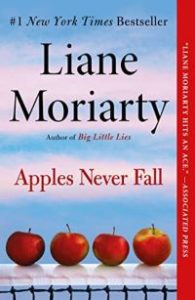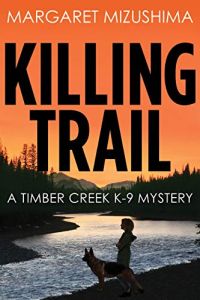North of Nowhere by Allison Brennan
Kristen McIntyre Reed plays soccer for her high school team, loves to help out at the ranch where her dad works, and Jason, whom she secretly likes, just kissed her for the first time. She appears to be a typical sixteen year old. But in Allison Brennan’s North of Nowhere appearances can be deceptive.
When her dad, Tony, wakes her at 5:30am her first response is to reach for her weapon. When Tony tells her simply “Plan B, baby” she immediately reaches for her sturdiest boots, dresses warmly and grabs her go bag. No questions. They trained for this; grab your bag and get your brother, Ryan. Ryan is ten years old, smart, adept, and deaf.
Plan B means Boyd has found them and they have to run. A blizzard is forecast but they have to go now, even the wait for dawn to arrive could be costly. But they need light to ‘borrow’ his boss’ plane and fly to Ennis where they will get a car and head 300 miles north to a well-stocked cabin near the Canadian border.
Boyd McIntyre runs one of the largest crime syndicates in Los Angeles and he is Kristen and Ryan’s father. Tony was part of the syndicate until five years ago when he and Maggie, Boyd’s wife and the kid’s mother, devised a plan to get out. As Maggie and Kristen are leaving to meet Tony and Ryan, Maggie is shot and killed but Kristen escapes. Since then, Tony has been hiding and protecting them in Montana.
When his search lead Boyd to Montana he hired local help to locate Tony. They soon figure out what Tony may be planning and arrive at the airfield before Tony is ready. As the plane gains speed Boyd is chasing them and fires a warning shot at the plane. It doesn’t deter Tony but soon more bullets are hitting the plane. They manage to take off but the plane is damaged and Tony was hit twice, in the arm and chest.
Only halfway to Ennis, they are forced to crash land in a lake. Kristen manages to get them off the plane and to the shore but Tony is too badly injured to go further. When they hear a helicopter overhead they know Boyd has found them. Kristen will do anything to protect Ryan, even follow Tony’s order to leave him and hike through the mountains in a desperate attempt to reach Ennis before Boyd can catch them.
Tony’s boss, Nick Lorenzo, knows something must have gone wrong for Tony to take the plane. A neighbor tells him that there was gunfire at the airfield and then the plane’s transponder notifies Nick that the plane has gone down. Nick knows the storm is coming but he needs to help Kristen and Ryan if they survived the crash. First he calls Tony’s emergency contact to notify her of the situation, Ruby McIntyre, Boyd’s sister.
Local search and rescue is tied up looking for a family that didn’t make it home so Nick and his son, Jason, set out alone. When they find the crash site, Tony is dead. They search the area for Kristen and Ryan but only find footprints. The smaller prints of the kids and three sets of adult footprints. Nick sends Jason back to get help and he follows the prints.
Ruby meanwhile is making her own arrangements to help Kristen and Ryan. At 18 she enlisted in the military to free herself from the family. She tried to help Tony and the kids five years ago but Tony cut her off. Now she’ll do whatever it takes, even parachuting onto the mountain, to find her niece and nephew.
Kristen is strong and resourceful but can she keep safe a young boy who can’t hear danger approach or a warning shout? The weather is deteriorating, the terrain is treacherous, Boyd and his men can’t be far behind and they are a long way from the first stop in Plan B.
Boyd isn’t dressed or prepared for the mountain and the weather but nothing is going to stop him from finding his kids and taking them back. Ruby is prepared and equally determined to keep the kids from Boyd. Nick’s concern is for the kids but he doesn’t know what will happen if someone gets in Boyd’s way.
This thriller has a lot of moving parts, and the characters all have backstories that are relayed over the course of the chase through the mountains. Once it gets going it is almost non-stop action and just when you think you can take a breath something more deadly than the mountains and the storm waits.
Review by Patty Crane, Reference Librarian







